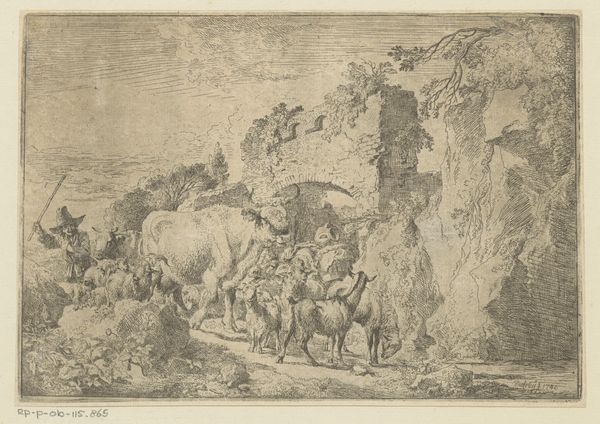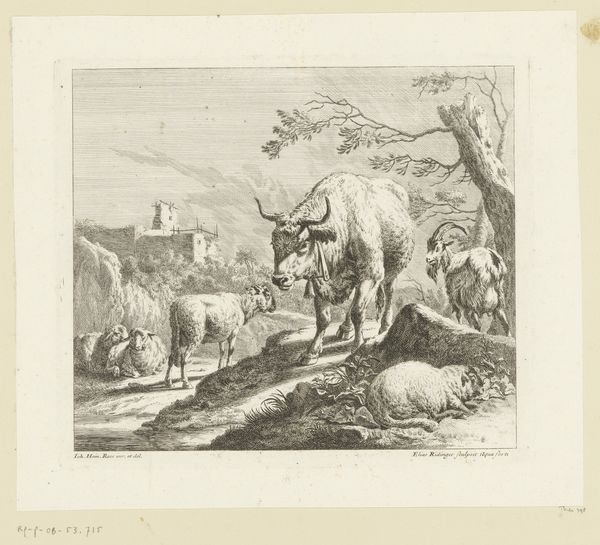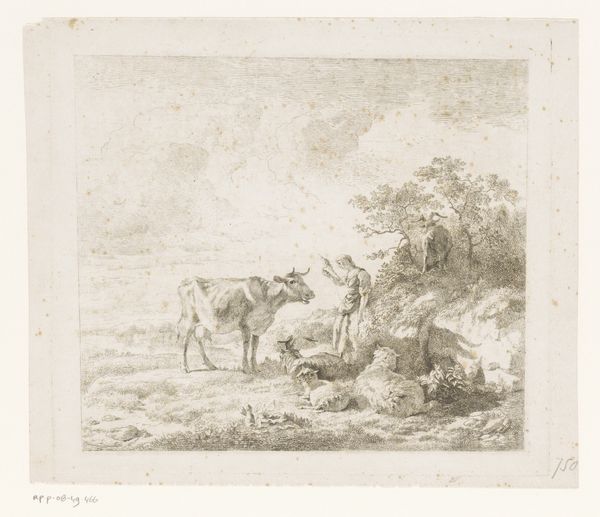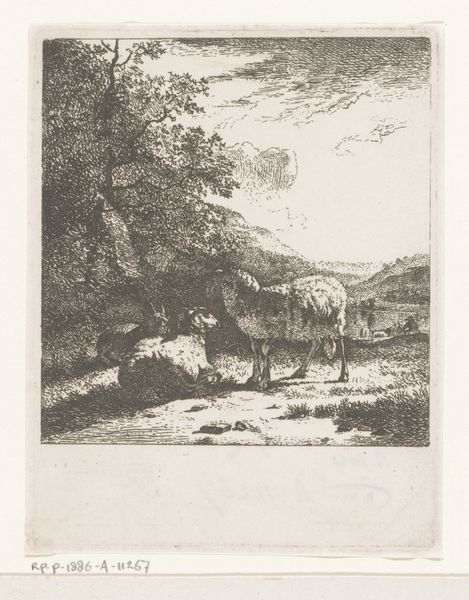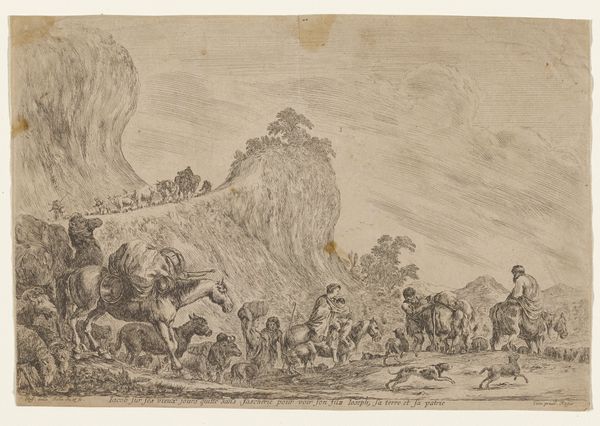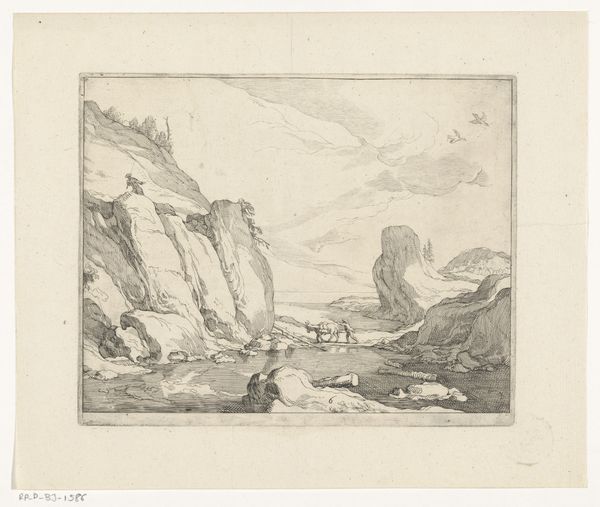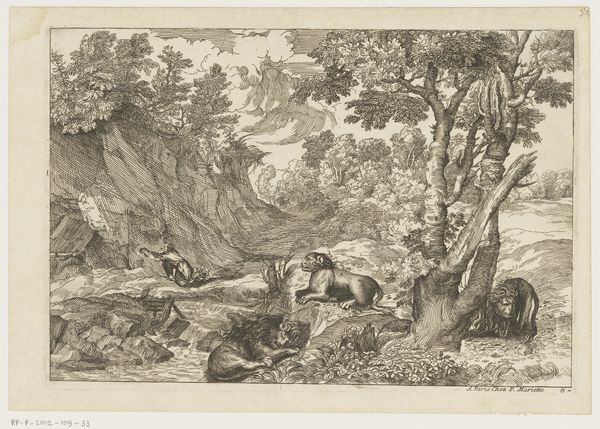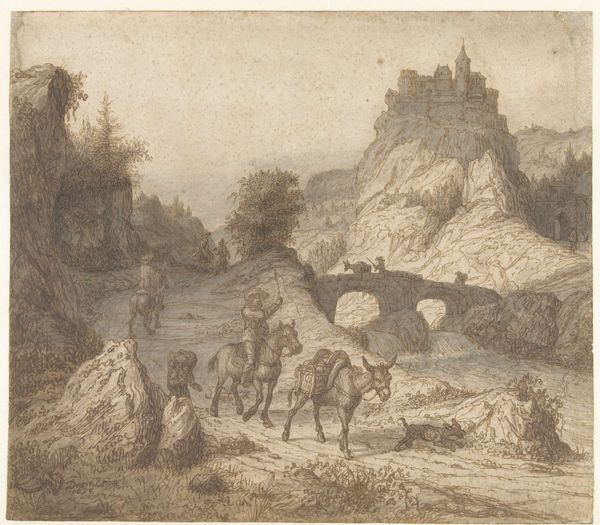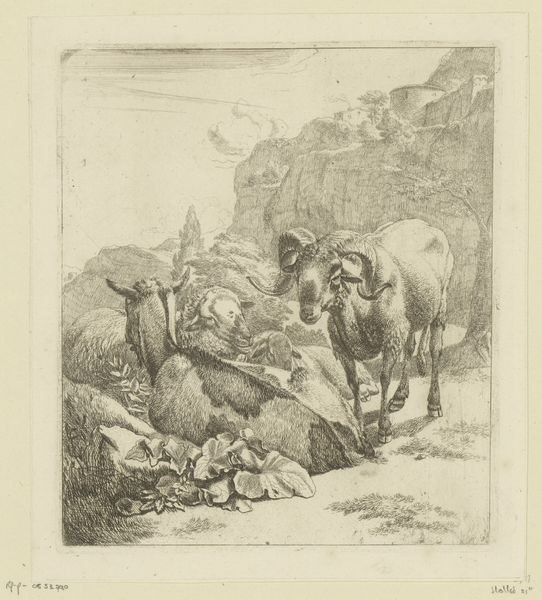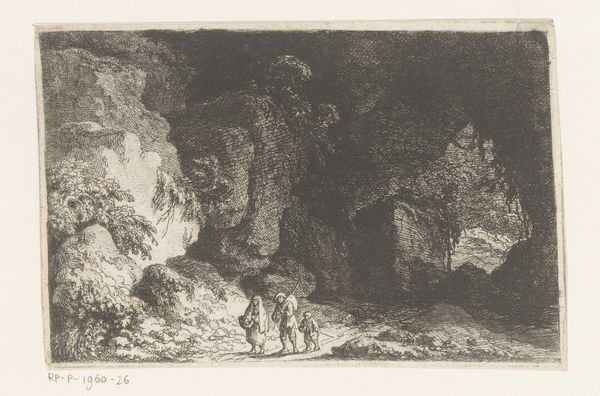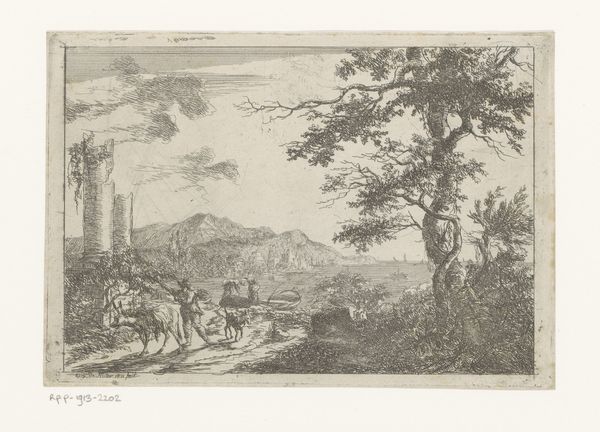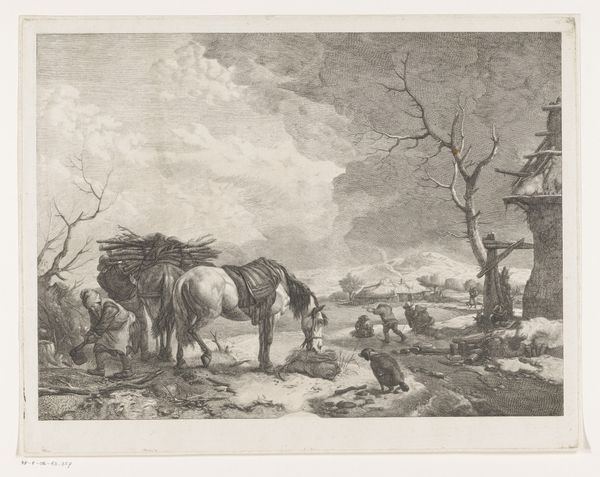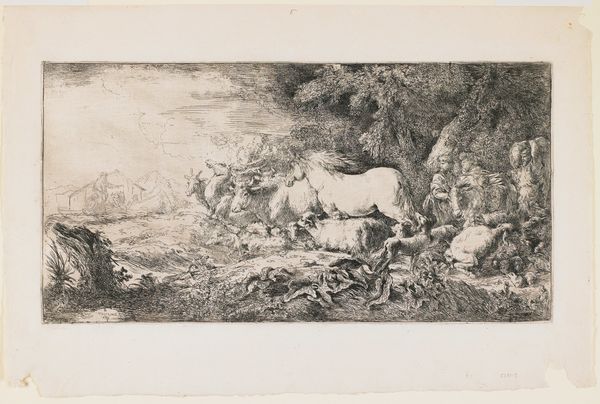
drawing, print, etching
#
drawing
#
baroque
#
dutch-golden-age
# print
#
etching
#
landscape
#
figuration
#
genre-painting
Dimensions: 7 7/8 × 10 3/16 in. (20 × 25.88 cm) (plate)9 7/16 × 12 in. (23.97 × 30.48 cm) (sheet)
Copyright: Public Domain
Curator: The work before us, simply titled "Print," is an etching by Nicolaes Berchem, created around the 17th century. Editor: It evokes a scene of bucolic serenity, even in monochrome. There's an easy harmony between the figures, animals, and architecture that makes me want to relax in the same setting. How does Berchem accomplish this balance? Curator: Note the diagonal organization from the lower-left to the upper-right: the resting sheep anchor the foreground, leading the eye past the standing cows to the shadowy rockface behind them, creating depth. The human figures are carefully situated to maintain that balance, never overwhelming the animals or the landscape. Observe also how the values work tonally to enhance depth as well: denser in the lower left, shifting through half-tones, toward light at the top. Editor: Berchem’s work feels so emblematic of the Dutch Golden Age. In looking at the arrangement, I’m reminded how the rising Dutch merchant class increasingly desired domestic scenes depicting country life. Berchem spent time in Italy so this feels like a romantic interpretation of the pastoral life enjoyed, or imagined, by the wealthy. Do you think that understanding influenced his approach? Curator: Most certainly. Genre paintings like this spoke to particular values then: hard work, respect for land and animals, domestic bliss. However, as a print, this work offered greater dissemination among those burgeoning collectors and middle classes interested in Italianate landscapes. The diagonal organization invites the viewer "in," much as his original paintings on panel would have done. Note too how each discrete area of the composition receives nearly equal descriptive intensity, a kind of semiotic flattening wherein the human isn’t valued any more or less than the animal, for example. Editor: Right, the composition treats both the wealthy owner of the cattle and the creatures under his care in a non-hierarchical manner, which seems an extension of this leveling Berchem accomplishes formalistically through descriptive intensities and even tonalities. Perhaps Berchem sought to level not merely class divisions but even those assumed to obtain among human, animal, and land. Curator: In a sense, all this descriptive intensity is finally democratic. After spending time examining the work closely, my eye is still captivated by his strategic and technical choices. Editor: For me, it is Berchem’s attention to this world – the cultural currents in the Dutch Golden Age – that elevates what otherwise might be a fairly simple drawing of cattle into something far richer.
Comments
No comments
Be the first to comment and join the conversation on the ultimate creative platform.
